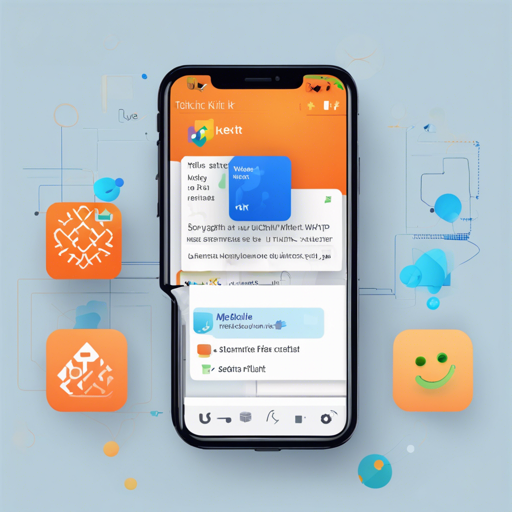Integrating WeChat functionalities into your Flutter app can elevate the user experience and simplify various processes. In this guide, we’ll walk you through the steps of using the WeChat SDK for Flutter, troubleshooting any issues that may arise, and understanding the underlying code logic.
Step 1: Setting Up Your Flutter Environment
Before diving into the WeChat Kit integration, ensure you have Flutter installed on your system. If you haven’t done this yet, follow the installation documentation on the official Flutter site.
Step 2: Adding WeChat Kit Dependency
To include the WeChat Kit in your Flutter project, you need to add it as a dependency in your pubspec.yaml file. Here’s how to do it:
dependencies:
wechat_kit: ^latestTagReplace latestTag with the version you want to use. This will allow Flutter to fetch the latest WeChat Kit package.
Step 3: Configure Android and iOS Settings
You will need to configure specific settings for both Android and iOS platforms.
Android Configuration
- Open your
android/app/build.gradlefile and add the required settings, making sure to follow the steps necessary for running your build. - Your key-store file configurations, such as alias names and fingerprints, need to be appropriately set up to ensure smooth integration.
iOS Configuration
- For iOS, you’ll need to define Universal Links, which allow users to link directly into your app from web pages.
- Install necessary pods by navigating to the iOS directory and running
pod install.
Step 4: Implementing WeChat Features
Now that you have added the necessary dependencies and configurations, you can start implementing WeChat features in your app. This often involves writing functions to initiate WeChat login, share content, or handle payments.
Understanding the Underlying Logic
Imagine the WeChat integration as a bridge connecting two islands—your Flutter app and the WeChat network. Just like you need sturdy cables (function calls) to ensure that the bridge is functional, the WeChat Kit provides APIs to allow for smooth communication between your app and WeChat’s services. These APIs serve as the structural elements that help you build that connection.
Troubleshooting Common Issues
While integrating the WeChat Kit, you might face a few hiccups. Here are some common troubleshooting steps:
- Check if you have the correct version of Flutter and Dart installed.
- Ensure that your API keys and app ID are correctly configured.
- If you experience build failures, try running
flutter cleanbefore runningflutter pub get. - Double-check your key-store setup, if you’re encountering signing issues.
For more insights, updates, or to collaborate on AI development projects, stay connected with fxis.ai.
Conclusion
Integrating the WeChat Kit in your Flutter app can significantly enhance its capabilities, providing users with a more streamlined experience. By following the steps outlined above, you’re well on your way to creating an app that seamlessly interacts with WeChat.
At fxis.ai, we believe that such advancements are crucial for the future of AI, as they enable more comprehensive and effective solutions. Our team is continually exploring new methodologies to push the envelope in artificial intelligence, ensuring that our clients benefit from the latest technological innovations.

